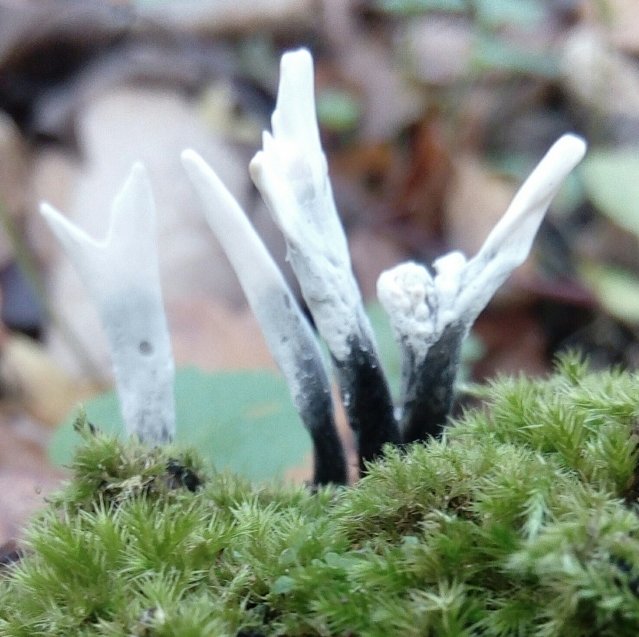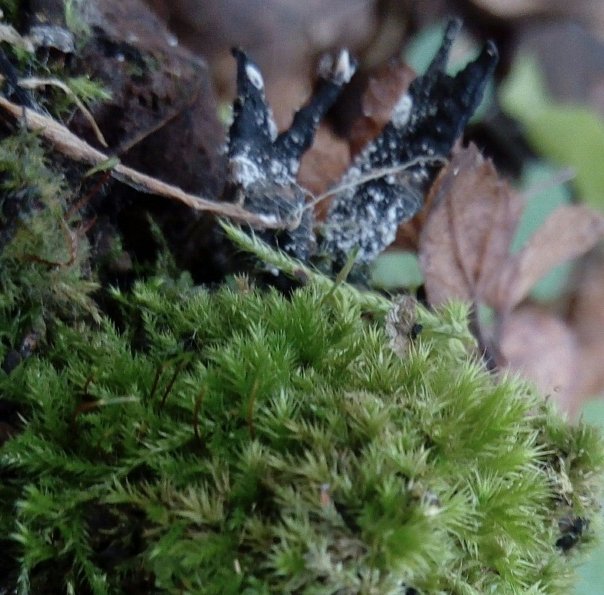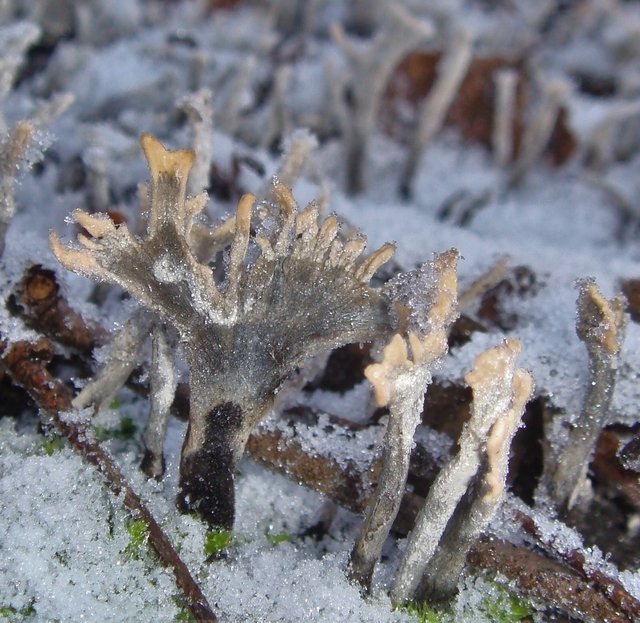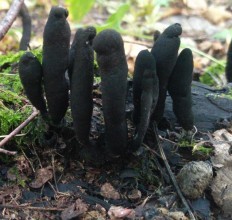Xylaria hypoxylon (Xylaria hypoxylon)
- Department: Ascomycota (Ascomycetes)
- Subdivision: Pezizomycotina (Pezizomycotins)
- Class: Sordariomycetes (Sordariomycetes)
- Subclass: Xylariomycetidae (Xylariomycetes)
- Order: Xylariales (Xylariae)
- Family: Xylariaceae (Xylariaceae)
- Rod: Xylaria
- Type: Xylaria hypoxylon (Xylaria Hypoxylon)
:
- Clavaria hypoxylon
- Sphere hypoxylon
- Xylaria Hypoxylon

Xylaria Hypoxylon is also known as “deer horns” (not to be confused with “deer horns”, in the case of xylaria we are talking about the horns of a male deer, “a male deer”), another name has taken root in English-speaking countries: “burnt wick” ( candle-snuff).
Fruiting bodies (ascocarps) are cylindrical or flattened, measuring 3-8 centimeters high and 2-8 millimeters wide. They may be straight, but more often bent and twisted, usually slightly branched, often in a shape resembling deer antlers. Flattened in the upper part, cylindrical in the lower part, black even in young specimens, velvety.
Young specimens may be completely covered with asexual spores (conidia), which appear as a white to greyish powdery coating, as if the mushroom were dusted with flour.

Later, as they develop, mature ascocarps acquire a black, charcoal color. On the surface develops a lot of rounded “bumps” – perithecia. These are small rounded spore-bearing structures with tiny holes or osteols for releasing the sex spores (ascospores).
Ascospores are kidney-shaped, black and smooth, 10-14 x 4-6 µm in size.
Pulp: white, thin, dry, hard.
From September until frost, in small groups, rarely, on stumps and rotting wood of deciduous and less often coniferous species. The fruiting body can last a whole year.

The mushroom is not poisonous, but is considered inedible due to its small size and very hard flesh.

Xylaria polymorpha (Xylaria polymorpha)
In the early stages of development under adverse conditions, it can be somewhat similar, but in general it is larger, thicker and does not branch like Xylaria Hypoxilone.
Photo in the article: Snezhanna, Maria.
Photo in gallery: Marina.









